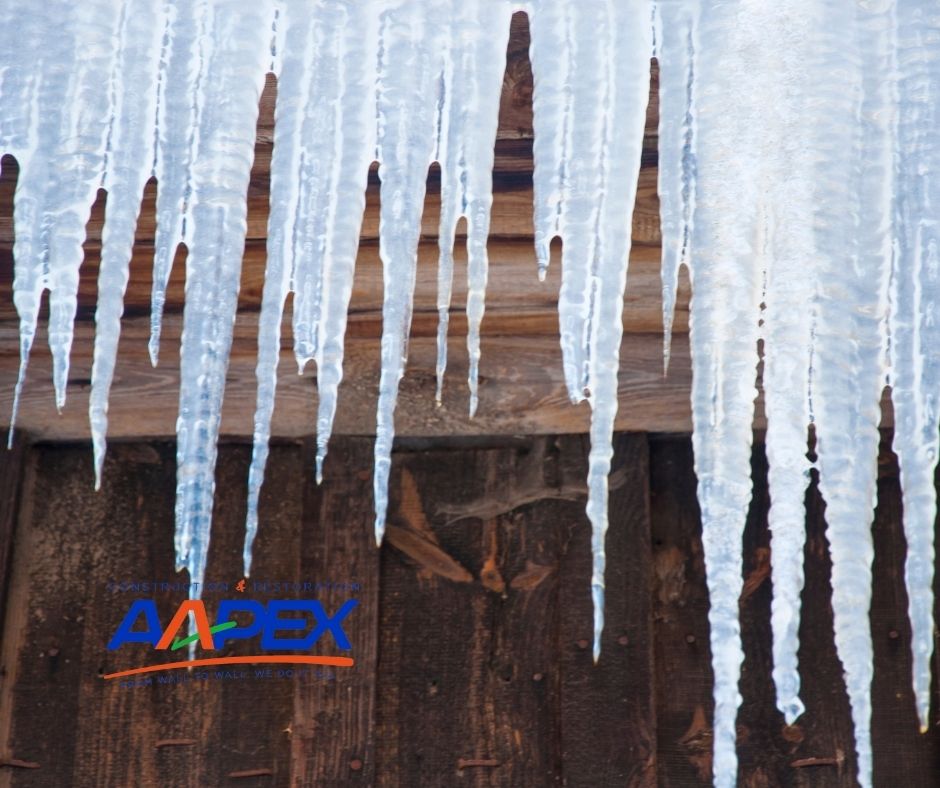Beautiful though it may be to have a long line of icicles cascading off the side of your house, it is a surefire sign that your roof has ice dams, which can cause serious damage to your home’s roof, gutters, walls, and ceiling. An ice dam is a line of ice that forms along the end of the roof, onto and above the gutter line, and prevents melting snow from draining off the roof. With nowhere else to go, water backing up behind an ice build up will find the path of least resistance and trickle down beneath your roof’s shingles, leaking into your home. While your roof’s underlayment can help slow the leakage caused by ice dams, preventing ice dams altogether is the only way to prevent this damage. Ice dams are caused by a number of factors and the damage they do to your home can be catastrophic. Water leaking through your roof may not only lead to water damage to your insulation, walls, and ceiling, but it can also create the ideal environment for mold to grow and thrive. Added to that, the sheer weight of ice dams can cause significant damage to your gutters, deforming them or even pulling them off your house entirely. Dealing with the root causes of ice dams now, before the snow begins flying, will keep your home safe and dry this winter.
Causes of Ice Dams
One major cause of ice dams is clogged gutters and downspouts preventing the melting snow from draining away from the roof. Water collects in the gutters and freezes, adding layer after layer until a substantial ice dam forms, with heavy icicles dripping off the sides of the gutters. The best method for preventing these ice dams is regularly cleaning out your gutters, especially after all the leaves have fallen in autumn. If the gutters are clear and the water is not prevented from draining away from the roof, ice dams are typically caused by problems with the home’s insulation or roof ventilation. As heat escapes from your home’s roof, it melts the snow above it. As the water makes its way down the roof, it freezes when it hits the unheated overhangs. If your home is not adequately insulated, or if your roof is not adequately ventilated, heat will be able to escape through the roof, melting the snow above it. Ideally, the snow on your entire roof would melt at the same pace. If the patch of roof above your home’s living space is free of snow, while the edges of your roof remain snow-covered, it’s a clear indication that your home’s insulation or ventilation need to be upgraded.
Treating & Preventing Ice Dams
As Ben Franklin would say, an ounce of prevention is worth a pound of cure. Avoid ice build up caused by clogged gutters by cleaning out your gutters regularly, especially after the last leaves have fallen. If you discover your home has ice build up during the middle of winter, one way to treat them, in the moment, is to fill a cotton sock with rock salt and toss it up onto your roof, near the edge. This will melt a section of the ice dam and allow the water to find its way down to the gutters where it will properly drain. Adding insulation to the attic or upgrading your roof’s ventilation will prevent heat from escaping into your attic and melting the snow above it.
Have you noticed ice dams in past winters and want to avoid potentially catastrophic damage to your home this winter? Contact us today so we can figure out and fix what is causing your roof to have ice build up.



Thanks designed for sharing such a good thinking, article is nice, thats why
i have read it entirely